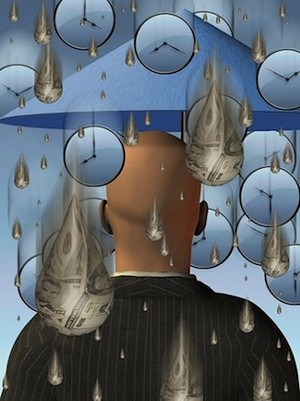The Media Oxpecker: The Search for a New Business Model
march 9, 2012 02:53 pm

Every week we round up media & tech industry news you may have missed while you were busy doing what you do best.
- Another week, another Pew report on the future of newspapers. In a study on how newspapers are faring in the quest to build digital revenue, the Pew's Project for Excellence in Journalism found that newspapers "are losing seven dollars in print advertising for every one dollar they are gaining in new digital revenue."
Brutal, yes. But the study was limited to 38 daily newspapers and even then, the researchers found "enormous differences among newspapers." So grain of salt, etc.
But while the report focused on dailies, it still serves as a reminder of what happens when a newsroom culture discourages innovation:
According to Pew, several of the senior managers who were interviewed described a culture of "inertia" that made change difficult to achieve within the paper, and another executive said bluntly that "there’s no doubt we’re going out of business right now." According to this executive, no one wanted to take the risk of trying to change or innovate because of a fear that they would not succeed — and then their company would fail anyway, and they would be blamed for it.
The study doesn't tell us anything we didn't already know, says Gawker's Hamilton Nolan:
At some point during the next decade or so, the newspaper industry will stabilize. Online ad revenues and paywall revenues and other associate revenues from digital readers will stabilize, and newspapers will have a solid idea of how large their market really is, and they will staff accordingly, and everything will be more or less normal again …
In the meantime, if you want to be a reporter, I hear Buzzfeed is hiring.
- A new phenomenon called "mobile advertising" is growing, The New York Times helpfully informs us.
- What does the new iPad, specifically its retina display, mean for publishers? The additional pixels bring more options, but also higher expectations for e-books and e-newspapers:
Publishers can leverage the power of the iPad’s new hardware to create more impactful eBooks with enhanced interactive features, brilliant visuals, improved 3D graphics, and all with enough bandwidth to stream interactive media components smoothly over 4G network connections.
- Meanwhile, the U.S. Department of Justice has threatened to sue Apple and five major publishers over e-book pricing.
- Can "Amazon Singles" and long-tail e-books give new life to old news?
- While the lack of female bylines continues to be a major problem for a lot of news orgs, NPR is a notable exception for having a long track record as "a hotbed for female journalists":
In part, [Nina] Totenberg says, NPR had no choice: salaries were so low that few men were willing to take jobs there. The inadvertent result was a roster of young female talent now considered among the most respected names in radio.
- How diverse are the blogs and magazines most millennials read? Here's GOOD's "Byline Count for the Next Generation."
- QR-code sceptics, behold: A Tumblr devoted to pictures of people scanning QR codes. Oh, wait. (h/t: Joe MacLeod)
- Have we really come to this?
An autograph is going to be seen by 15, maybe 20 people. Get a retweet from Shaquille O'Neal, and you're now the coolest thing ever with the 5 million-plus people who follow the Big Tweeter. To say nothing of the bragging rights you'll get when the folks who follow you see it.
- And finally, a birthday of sorts for The Media Oxpecker. The first edition of this column appeared a year ago at a time when we were all hooked on a drug called Charlie Sheen.
We've come a long way since then. And as citizens of the internet we've matured from our obsession with the trivial and viral, and have learned that … OH, GOD. Never mind.